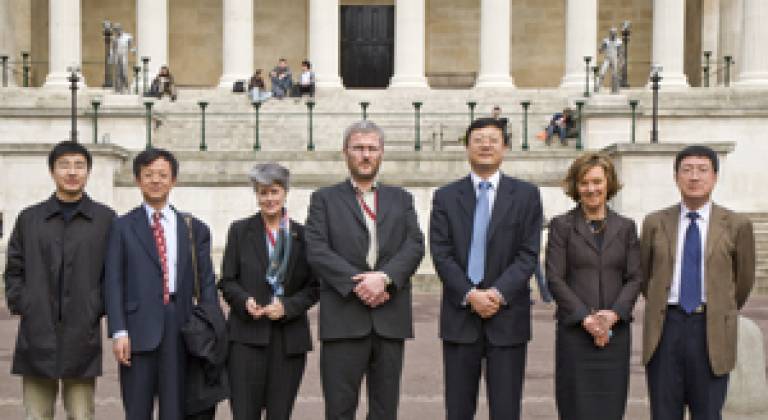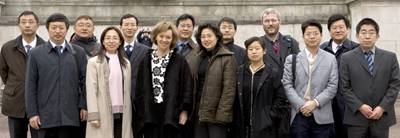Two teams from Tsinghua visit UCL
17 March 2008
Links:
 ucl.ac.uk/ucl-global/tag/china/" target="_self">UCL Global: China
ucl.ac.uk/ucl-global/tag/china/" target="_self">UCL Global: China
Last week, UCL was delighted to host two separate visits by delegations from Tsinghua University in Beijing.
China is devoting considerable resources to clean energy, sustainable development, and environmental research - areas in which UCL has considerable strengths - and Ambassador Madame Fu Ying visited UCL in January for a meeting specifically focused on these areas.
As a result of her visit, on March 14 UCL received a delegation led by Professor Chen Jining, Vice-President of Tsinghua University, accompanied by Professor Li Zheng, Director of the Tsinghua-BP Clean Energy Research & Education Centre and Assistant President of the Laboratory of Low Carbon Energy, and Professor Zhang Xiliang, Executive Director of the Institute of Energy & Environmental Economics.
The delegation met with: Professor Tadj Oreszczyn, future Head of the new UCL Energy Institute, Head of the Bartlett School of Graduate Studies and Professor of Engineering & the Environment; Professor Nick Tyler, Head of UCL Civil, Environmental & Geomatic Engineering; Professor Xiao Guo, UCL Materials & Inorganic Chemistry, specialising in Clean Energy Research; and Dr Dan Brett, UCL Centre for CO2 Technology. Several of these people are already involved in UK-China research networks, including Professor Tyler, who heads the SUSTAIN Network that is involved with sustainable cities and the Dongtan Ecocity near Shanghai.
Professor Michael Worton, UCL Vice-Provost (Academic & International), and Professor Moira Yip, UCL Pro-Provost for China, Hong Kong & Macau, hosted the delegation.
Tsinghua is the leader in energy research in China, with more than 500 people engaged in this area. They host the National Low-Carbon Laboratory and State Key Labs in a number of related areas. They are also active in strategic and policy issues. The university's Institute of Nuclear & New Energy Technology is on a separate campus.
Most Chinese university rankings place Tsinghua first in China overall. It has the best engineering and applied sciences programmes in the nation, occupying a position similar to MIT in the US.

Separately, a team of Tsinghua's heads of administrative departments visited UCL on 12 March 2008 to find about UCL's administrative procedures and vice-versa. The Tsinghua delegation was led by Professor Ji Shishan, Deputy Director of the Office of Scientific Research & Development. This was an opportunity to ask focused questions about what are the real opportunities for working with Tsinghua, whether in the short-, medium- or long-term. The Tsinghua delegation heard presentations from: Mrs Julia Abbott, Office of the UCL Vice-Provost (Academic & International); Dr Paul Ayris (UCL Library Services); Ms Julie Rolls (UCL International Office); Mr Mark Sudbury (UCL Development & Corporate Communications Office); Dr Jeremy White (UCL Safety Services); and Professor Moira Yip, UCL Pro-Provost for China, Hong Kong & Macau.
Admission to Tsinghua is highly competitive. The majority of selected students are national scholars and among the brightest high school graduates in the country. Many of China's top scientists, engineers, politicians and business leaders are among Tsinghua alumni. The current Chinese president, Hu Jintao, is a former Tsinghua student, having graduated with a degree in hydraulic engineering in 1964.
Since China opened up to the world in 1978, Tsinghua University has developed at a breathtaking pace into a comprehensive research university. The university has 13 schools and 55 departments, with faculties in science, engineering, humanities, law, medicine, history, philosophy, economics, management, education and art. The university has 13,100 undergraduates and 12,800 graduate students. As one of China's most renowned universities, Tsinghua has become an important global centre for fostering talent and scientific research.
To find out more, use the links at the top of this article.
 Close
Close

